Columbine Flower Brings in the Hummingbirds
Updated: Jan. 31, 2024
Attract hummingbirds to your yard with the eye-catching columbine flower. This colorful perennial may look delicate but it's one of the hardiest flowers around.
On This Page
Columbine Flower Care and Growing Tips
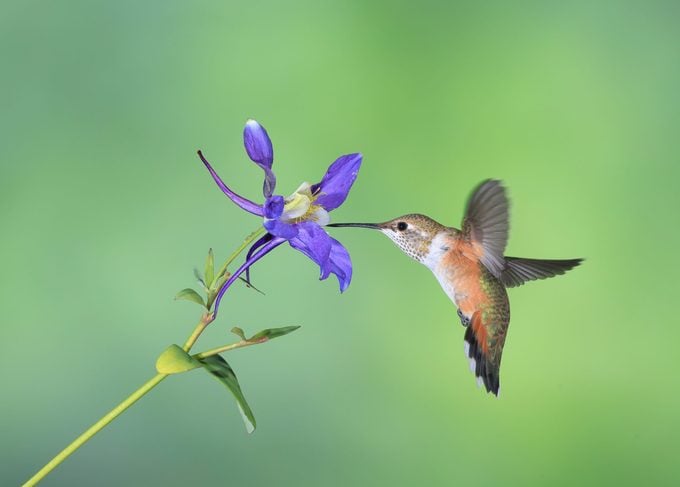
- Scientific name: Aquilegia
- Common name: Columbine or granny’s bonnet
- Zones: 3 to 8
- Light needs: Partial shade to partial sun
- Size: 2 to 3 feet tall
Columbine (Aquilegia) is the name of a genus of multi-colored flowers that bloom in the spring and are loved by gardeners for how easy they are to maintain. A columbine flower is a perennial plant, which means it comes back every year instead of dying off after a single growing season. You may also know it by its nickname, granny’s bonnet, a nod to its bell-shaped blossoms that are so heavy, they cause the stems to droop.
Hardy in Zones 3 to 8, columbine reaches 2 to 3 feet tall in good growing conditions. Identify it by its thin stems and five round-petaled blooms that are framed by sepals or spurred petals, creating a colorful, two-toned look. The foliage is a lush green with rounded or heart-shaped leaves, making it a handsome plant even after the blooms have fallen off.
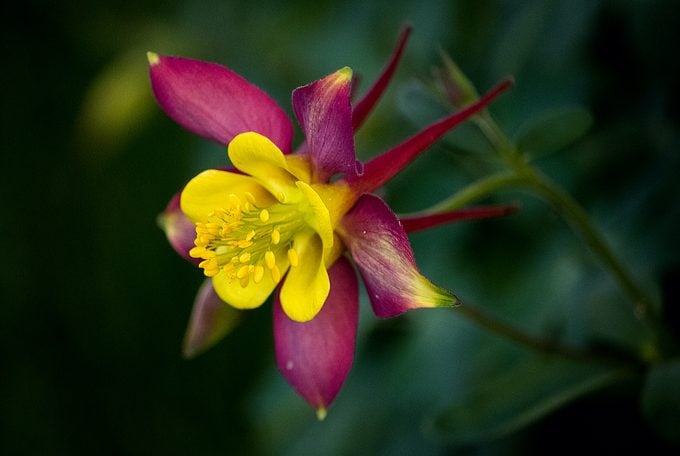
Although columbine isn’t fussy about its growing conditions, there are some things to keep in mind. It grows best in partial shade but will tolerate full sun, especially in cooler climates.
Columbine prefers well-draining soil with neutral to slightly acidic Ph levels. Most varieties are drought-tolerant, making it a good choice for rock gardens. Established plants only need watering about once a week—but make sure not to drench them. Regarding fertilizer, note that too much nitrogen puts a damper on their blooms.
Check out more of the best perennials to grow for hummingbirds.
Are Columbines Native Wildflowers?
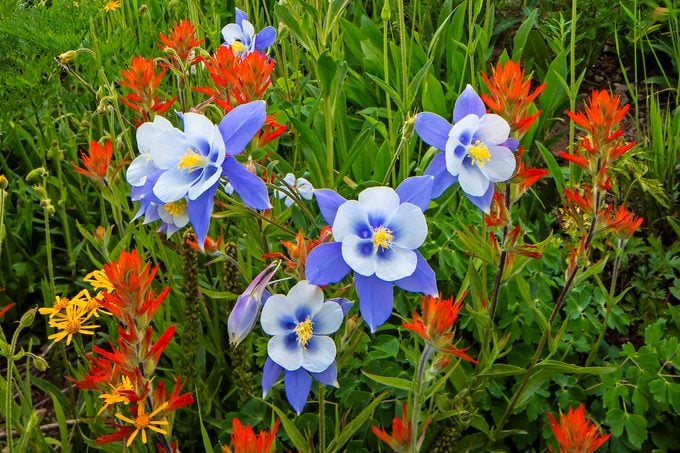
Plant enthusiasts best know columbine as a native wildflower, though of course, it can be grown in gardens and backyards— often with or without human help. Colorado’s state flower, the Colorado blue columbine, is a descendant of one of the earliest native columbines in North America. Another well-known wildflower species is Eastern red columbine, native to most states east of the Rockies.
These days, there are about 70 columbine flower species and counting. Columbine propagate and cross-pollinate easily, so it’s not unusual for new hybrids to hit garden shops every year.
A couple cultivars to try include the Kirigami series (the blooms tilt up for a bigger wow factor) and Black Barlow (the dark petals amp up the drama).
When and Where to Plant Columbine
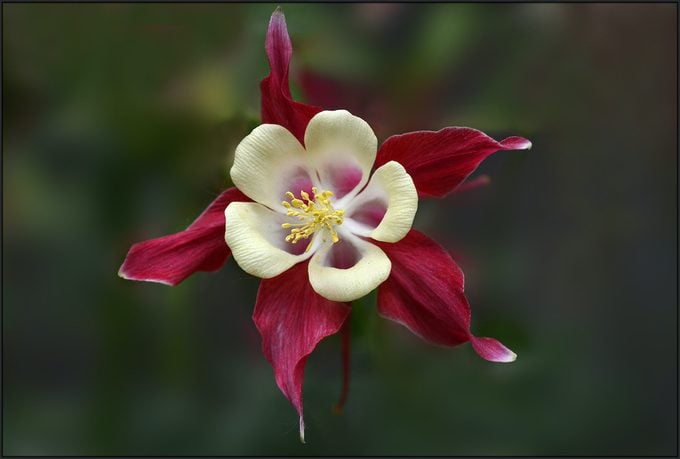
Columbine are spring blooming flowers, so one of the best times to introduce them to your garden is in autumn. No need to get the trowel out for columbine—most gardeners direct sow the seeds by simply pressing them into the soil. They need sunlight to germinate, so you don’t want to bury them. Once established, columbine readily self-seeds and produces more seedlings on its own.
You can also direct-sow seeds outdoors in early spring or start seeds indoors in mid- to late winter. Note that columbine seeds germinate best if chilled at 40 degrees for a few weeks. This cold period is known as known as stratification.
Around 30 to 90 days after planting, you’ll have seedlings that should be watered frequently to maintain moisture. Just don’t go overboard and drown them. Transplant indoor-grown seedlings to your garden after the last spring frost.
Columbine adds pops of color in-between the last spring bulbs and the first summer flowers. Deadhead spent blooms to encourage additional flowering. Gardeners like to use columbine in borders and beds but it can also be grown in containers if you’d prefer to more strictly control its spread. Many container-bound columbine are hardy enough to come back in spring.
Columbine Pests and Diseases
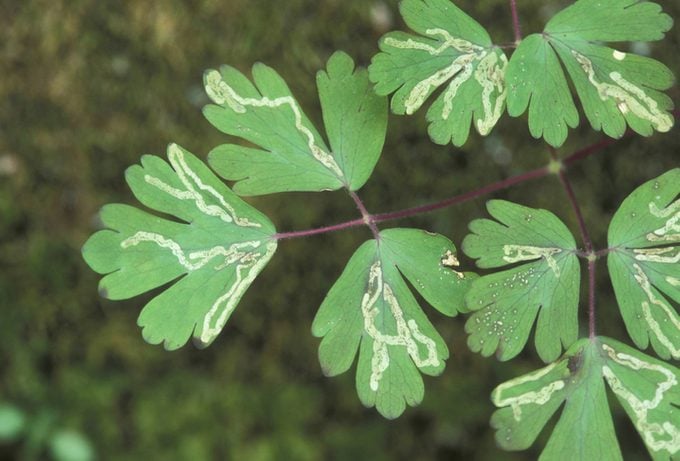
Because columbine is a native perennial, it’s a really hardy plant but it can sometimes encounter issues, too. Pests like columbine leafminer attack by damaging the foliage as they feed until maturity. The adult flies are hard to spot but if you see squiggly stripes on foliage, you probably have a leafminer problem. Their larvae overwinter in the ground, so turning up the soil may help control their population. Removing infected leaves is a good idea, too. Luckily, leafminers only affect how the plant looks and won’t destroy it.
Do Columbine Flowers Attract Hummingbirds?
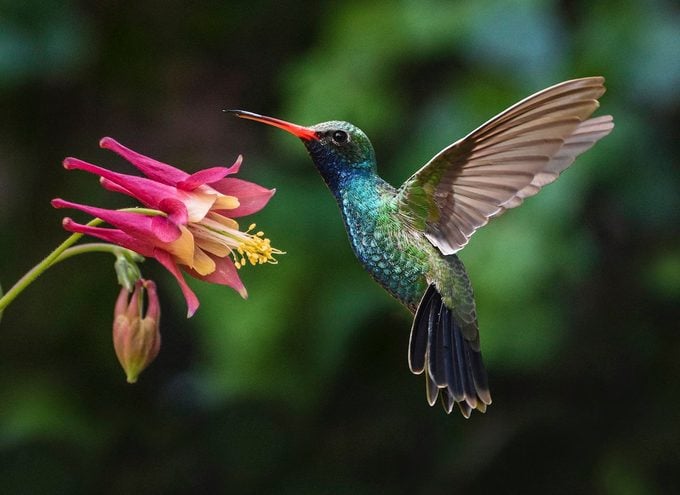
The biggest motivator for bringing columbine into your landscape is for all the hummingbirds and backyard pollinators it attracts. Hummingbirds especially love it because of the flowers’ tubular shape. Another bonus? The blooming season is perfectly timed for when hummingbirds are returning and looking for a major energy boost.
Hummingbirds will stop at any color of flower but they especially love warm hues, so red or pink columbine are your best bet for attracting them. Butterflies, moths and bumblebees love the nectar-rich blooms, too.
Why Trust Us
For nearly 30 years, Birds & Blooms, a Trusted Media Brand, has been inspiring readers to have a lifelong love of birding, gardening and nature. We are the #1 bird and garden magazine in North America and a trusted online resource for over 15 million outdoor enthusiasts annually. Our library of thousands of informative articles and how-tos has been written by trusted journalists and fact-checked by bird and garden experts for accuracy. In addition to our staff of experienced gardeners and bird-watchers, we hire individuals who have years of education and hands-on experience with birding, bird feeding, gardening, butterflies, bugs and more. Learn more about Birds & Blooms, our field editor program, and our submission guidelines.
Sources
- University of Wisconsin-Madison Division of Extension
- The Connecticut Agricultural Experiment Station
- New York Botanical Garden
- Monrovia
- Utah State University Extension
- Britannica
- United States Department of Agriculture
- Virginia Cooperative Extension
- The National Gardening Association




















